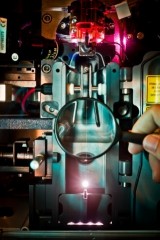The Encyclopedia Britannica may have published its last print edition, but a group of Dana-Farber scientists and their colleagues recently produced one of the first encyclopedias to help researchers determine which subtypes of cancer are likely to respond to current drugs.
The freely available, online encyclopedia lists hundreds of cancer subtypes – each with a unique set of genetic abnormalities that define it – along with drugs that are known to target those defects. The data, described alongside a similar catalog developed by another team of investigators, will guide researchers in designing clinical trials – improving the chances that the drug being studied will act against the particular genetic vulnerabilities within a tumor.

 As a cancer biologist,
As a cancer biologist,  Mattel Inc., maker of Barbie dolls, last week announced that it would create a bald version of the popular fashion doll to support people battling cancer.
Mattel Inc., maker of Barbie dolls, last week announced that it would create a bald version of the popular fashion doll to support people battling cancer. At many supermarkets, you can dump a pocketful of change into a machine that rapidly counts your coins, sorting them into pennies, nickels, dimes, and quarters and computing the total amount.
At many supermarkets, you can dump a pocketful of change into a machine that rapidly counts your coins, sorting them into pennies, nickels, dimes, and quarters and computing the total amount. If you’re supporting a friend or family member who is undergoing cancer treatment, you may not think of yourself as a “caregiver.” It’s a role that can be very rewarding, but also challenging and stressful.
If you’re supporting a friend or family member who is undergoing cancer treatment, you may not think of yourself as a “caregiver.” It’s a role that can be very rewarding, but also challenging and stressful.